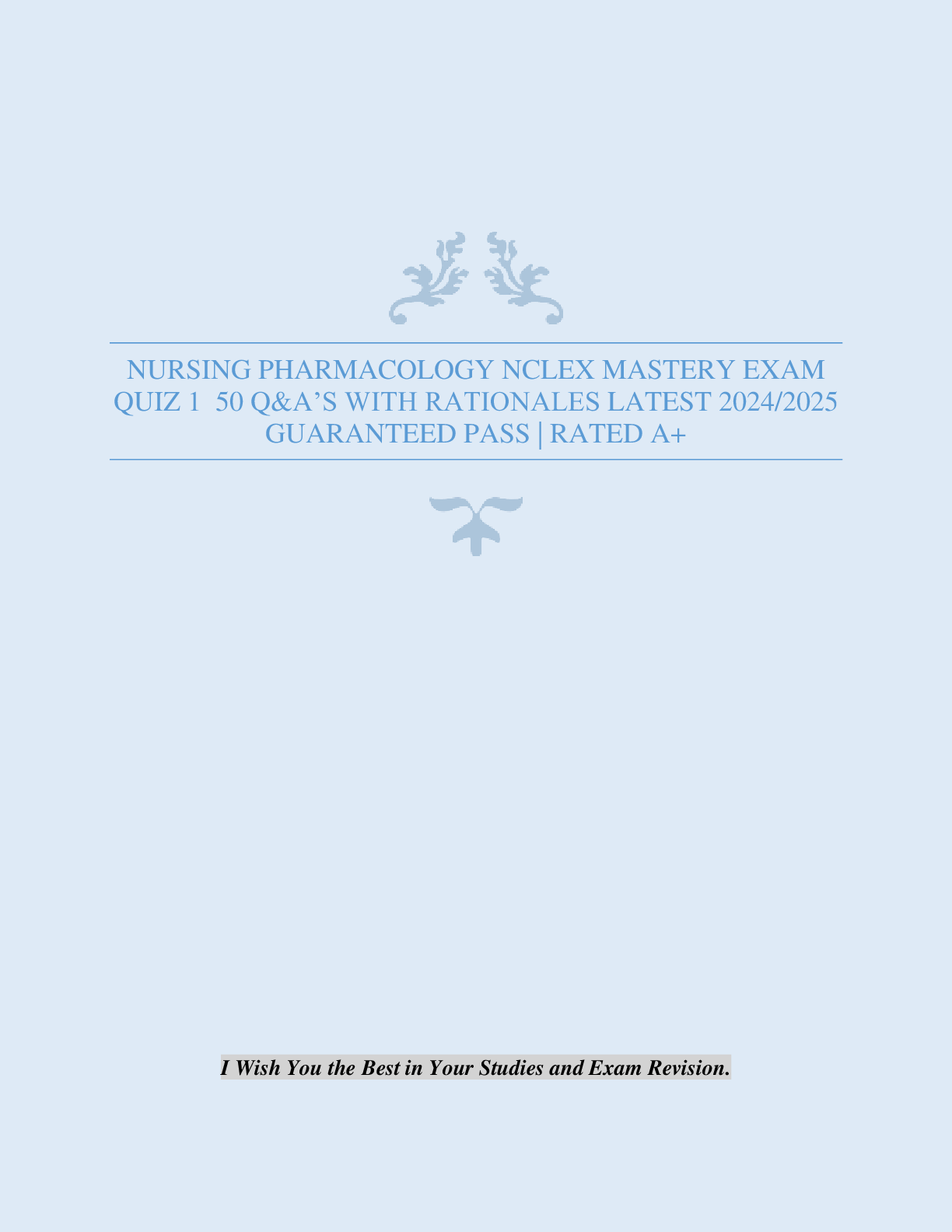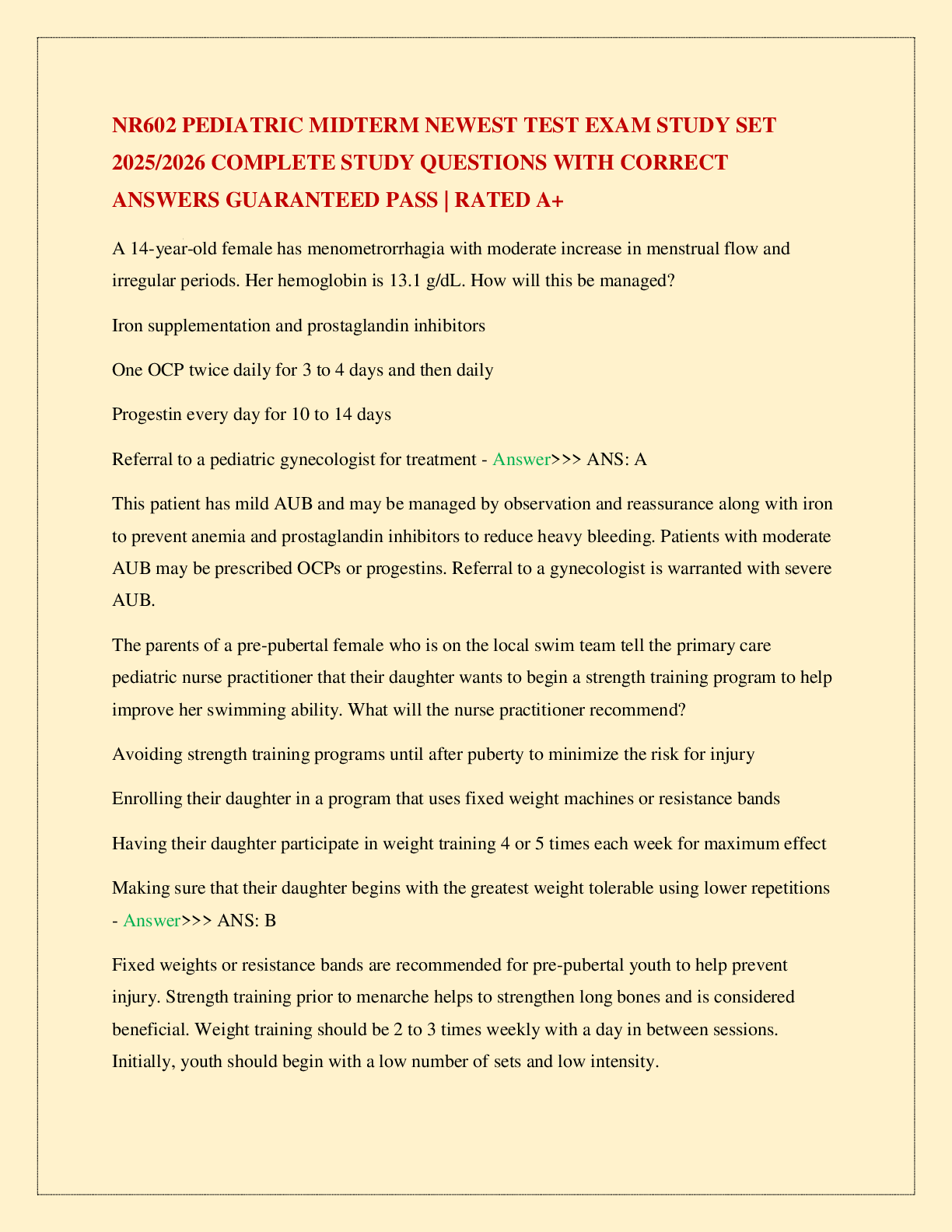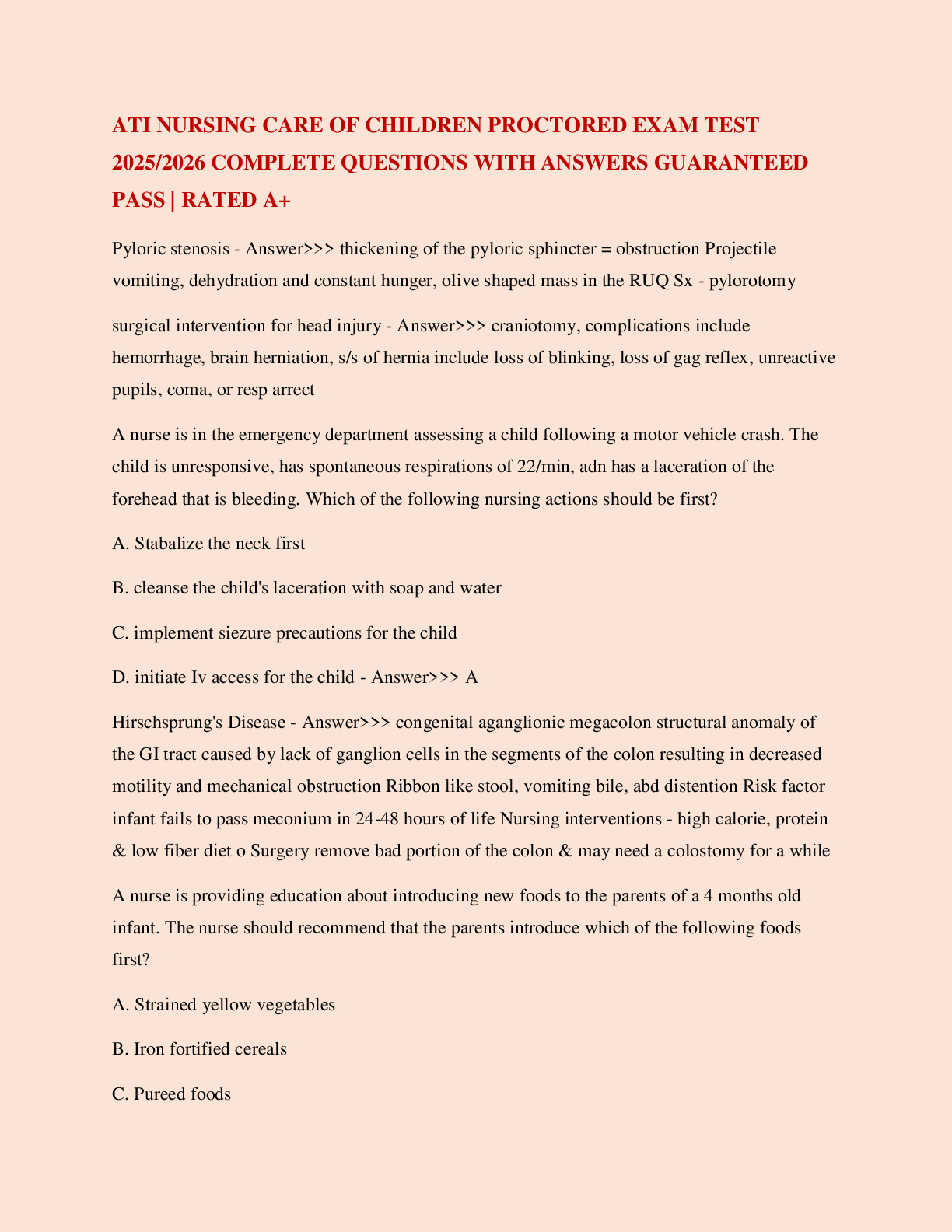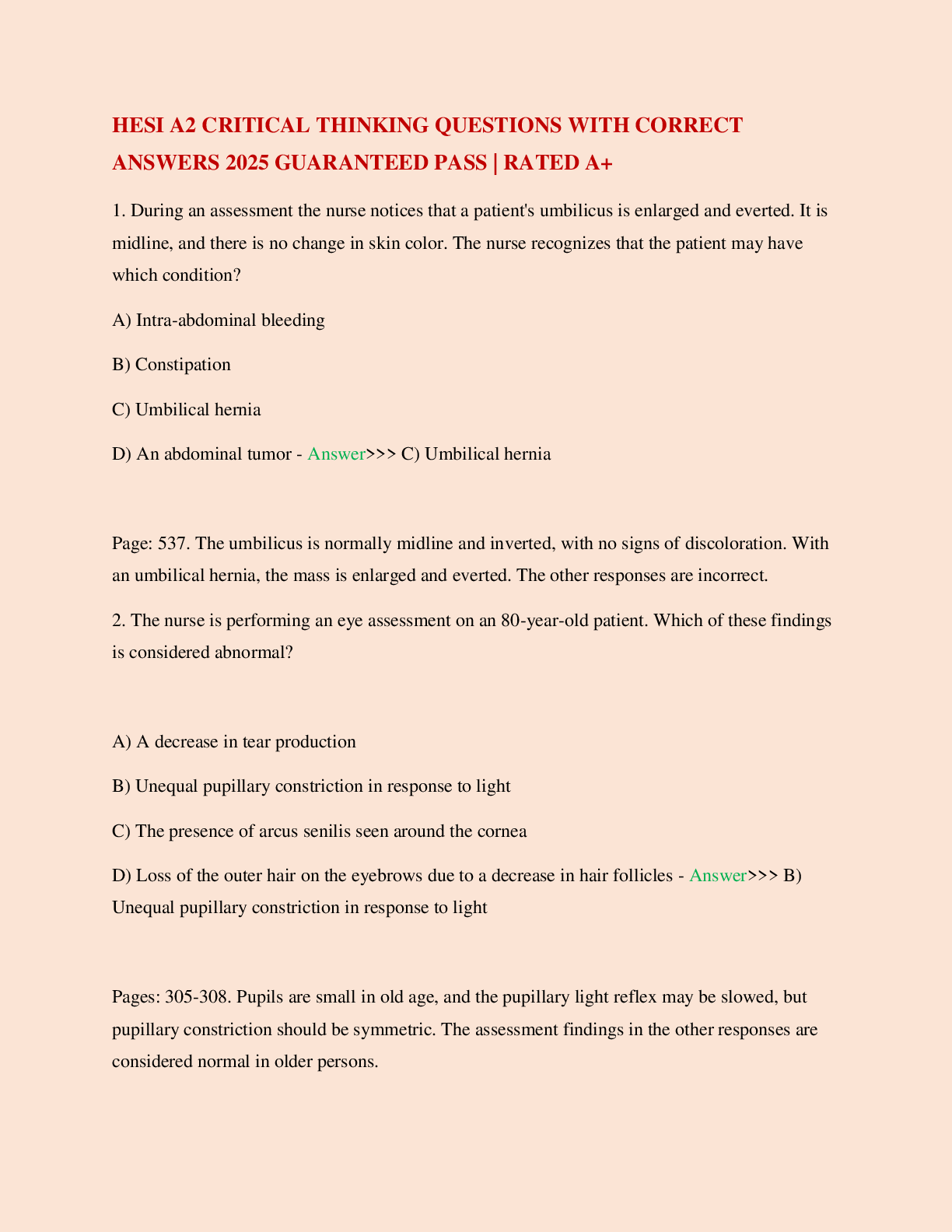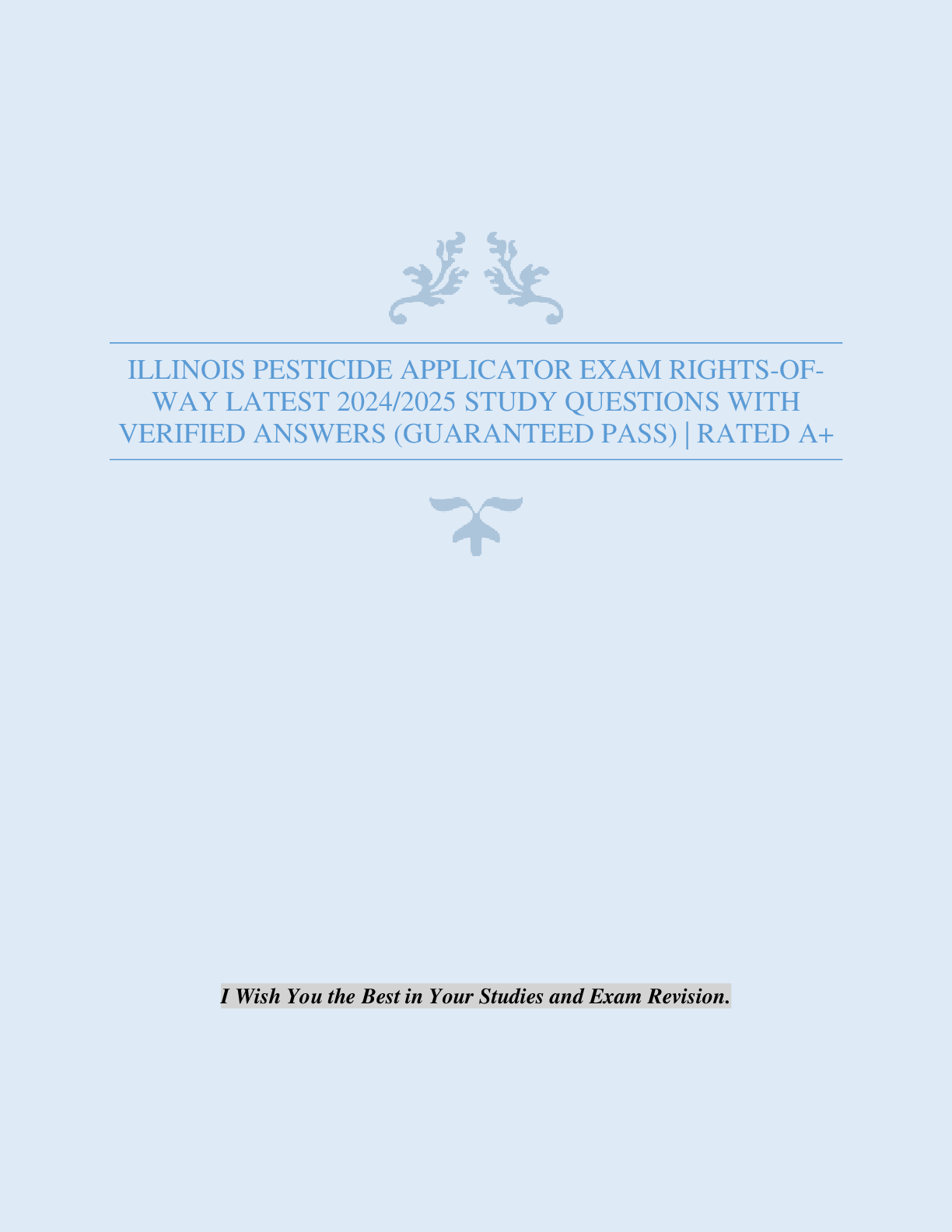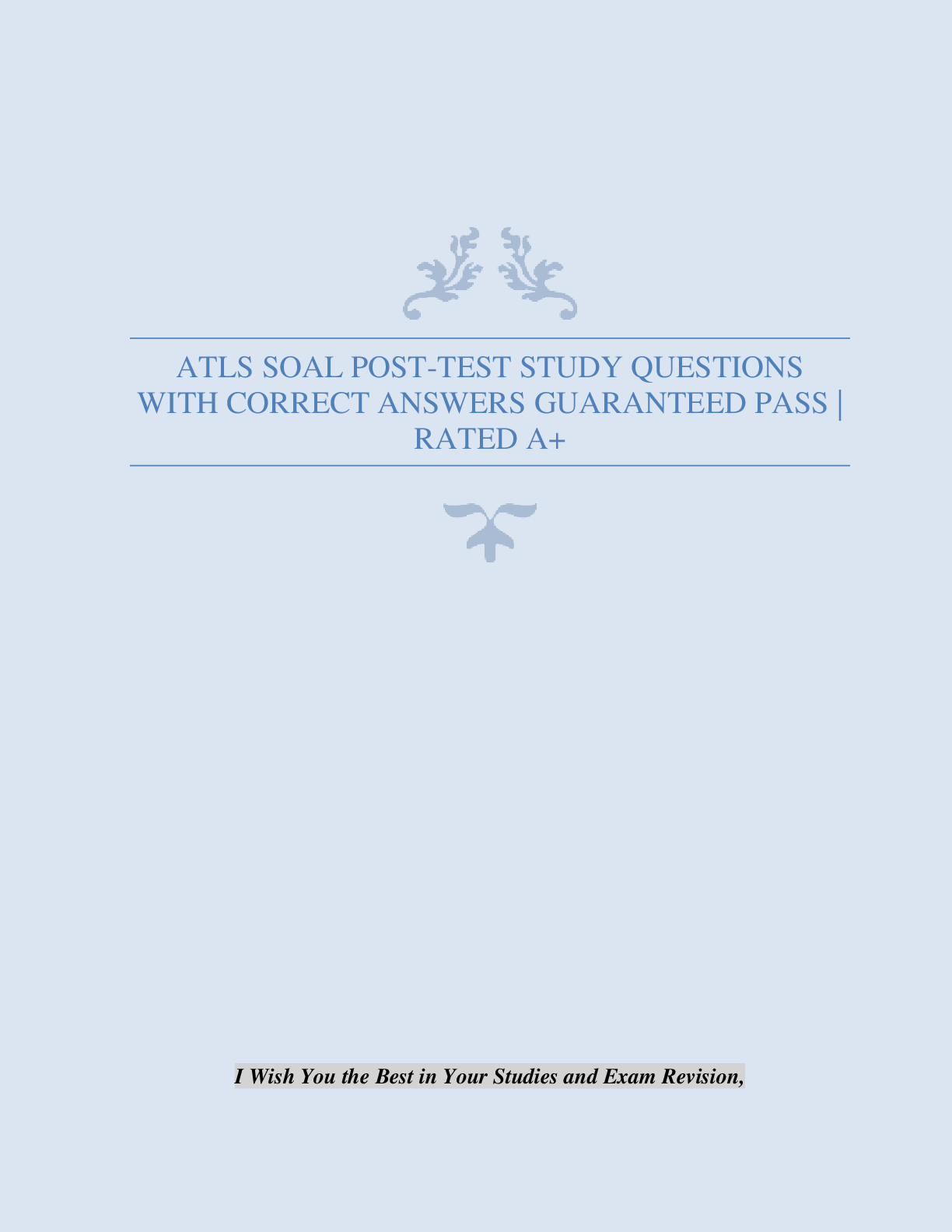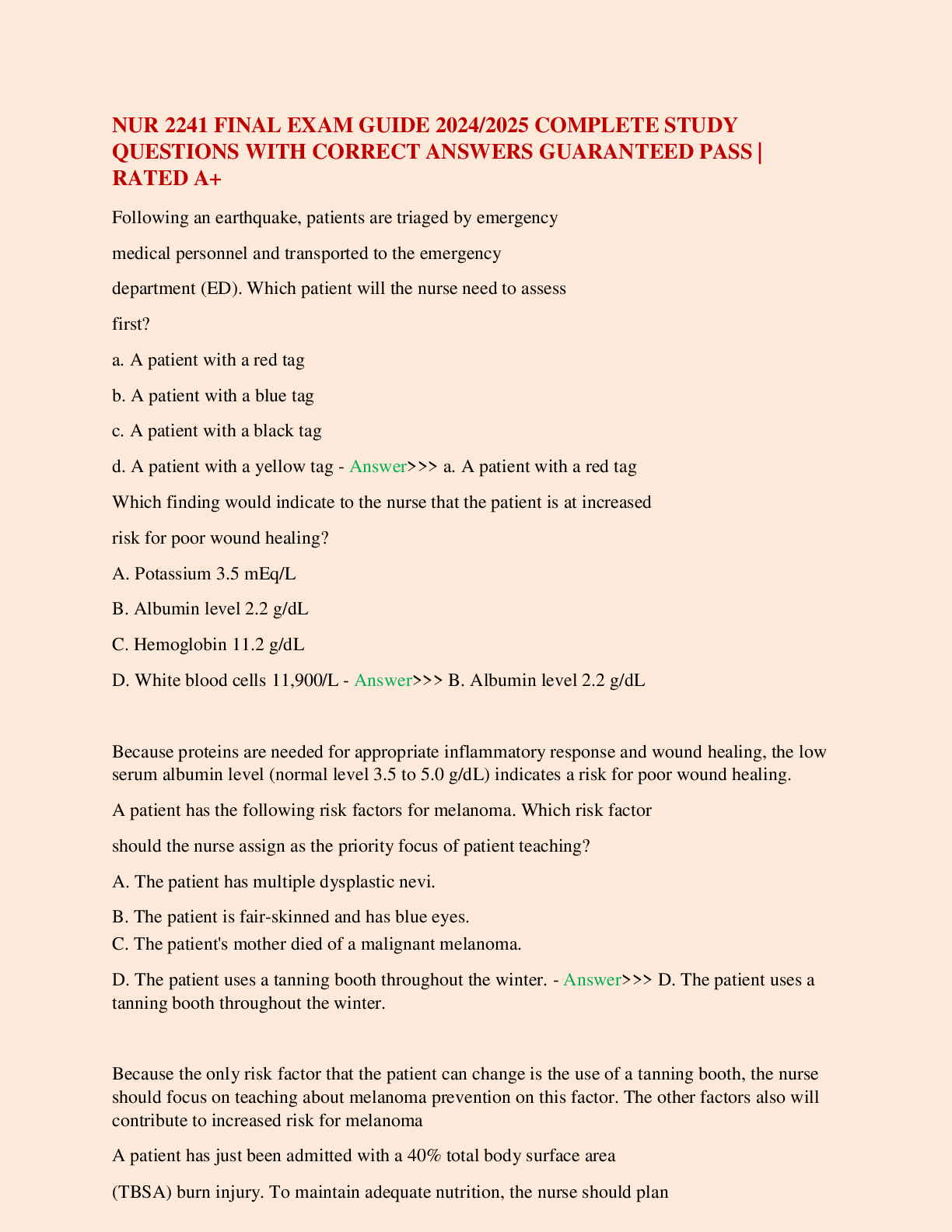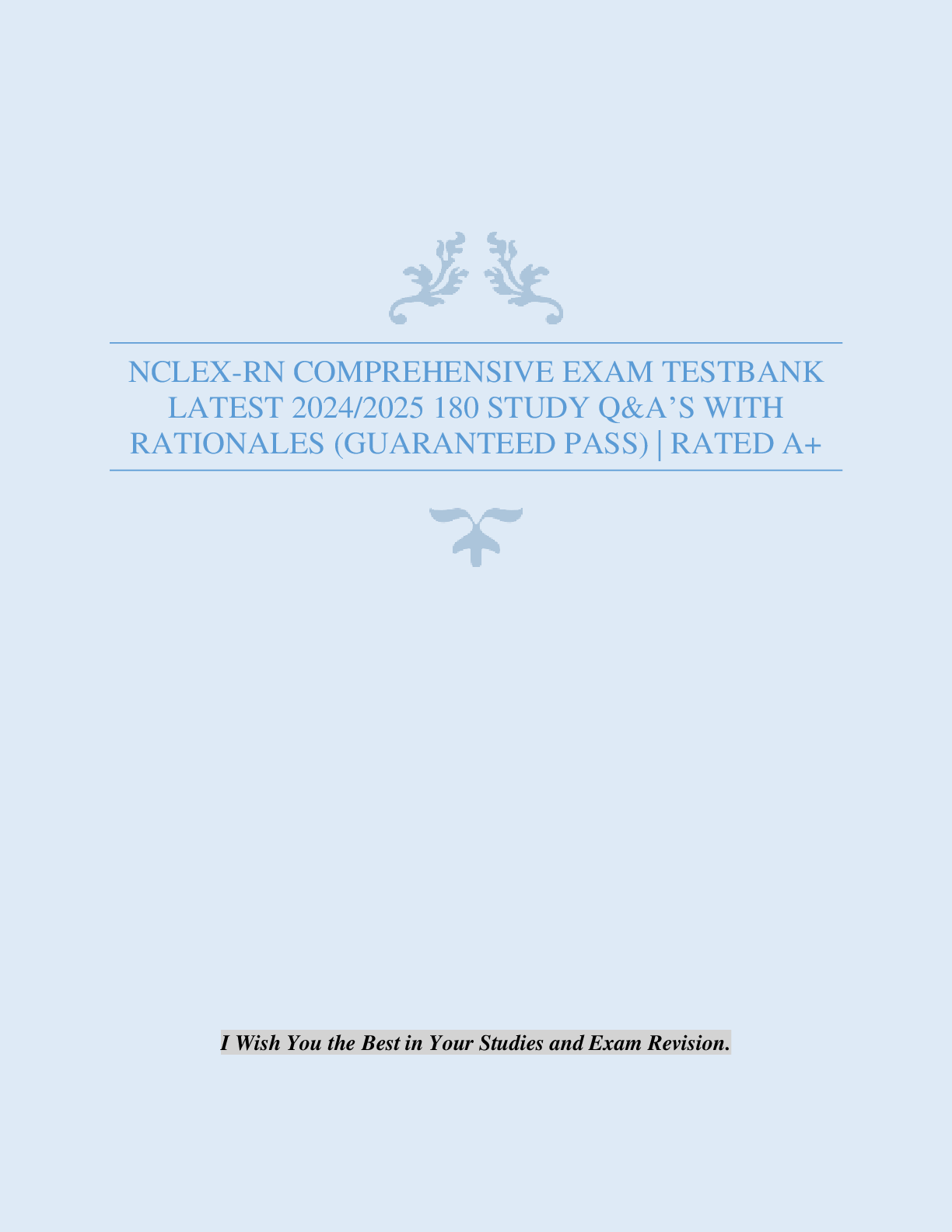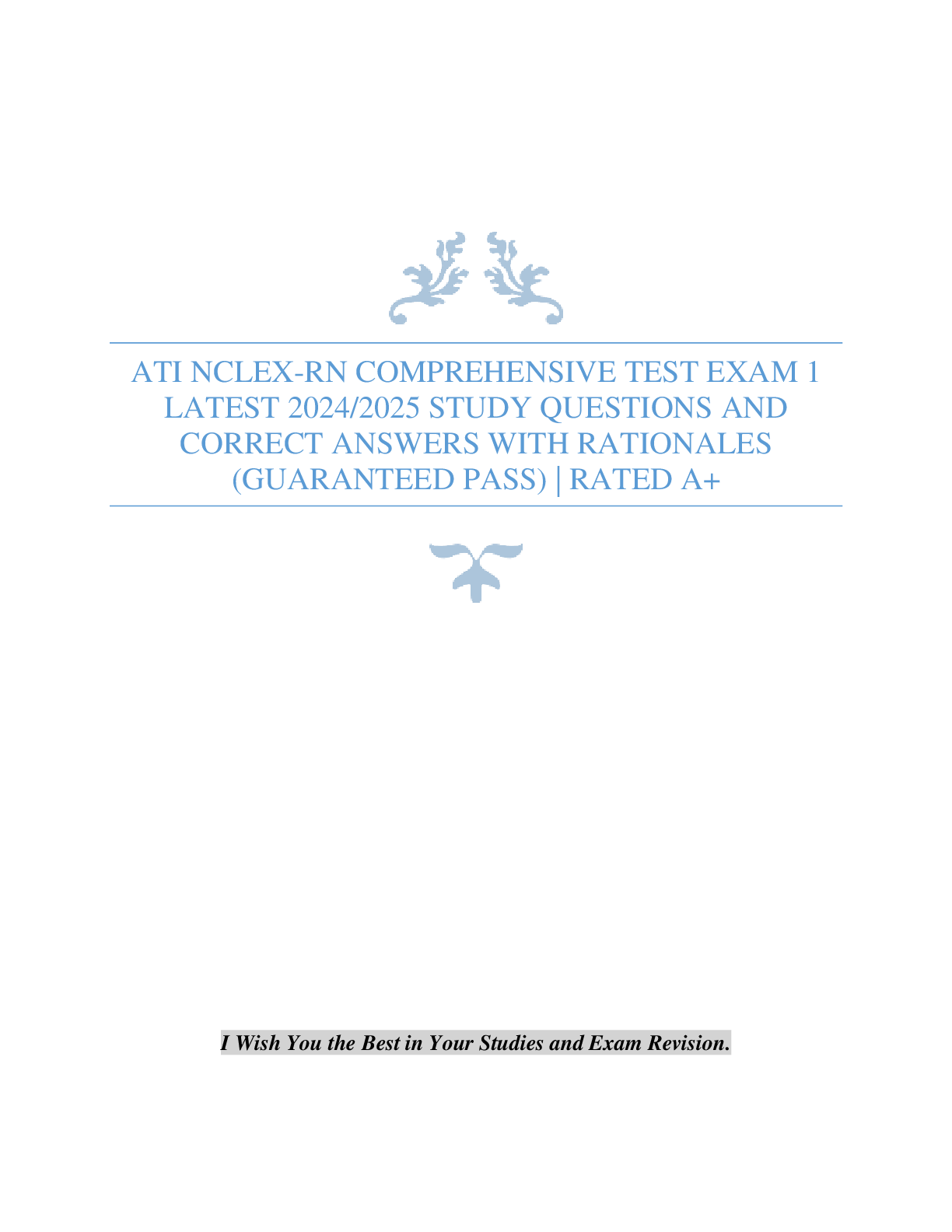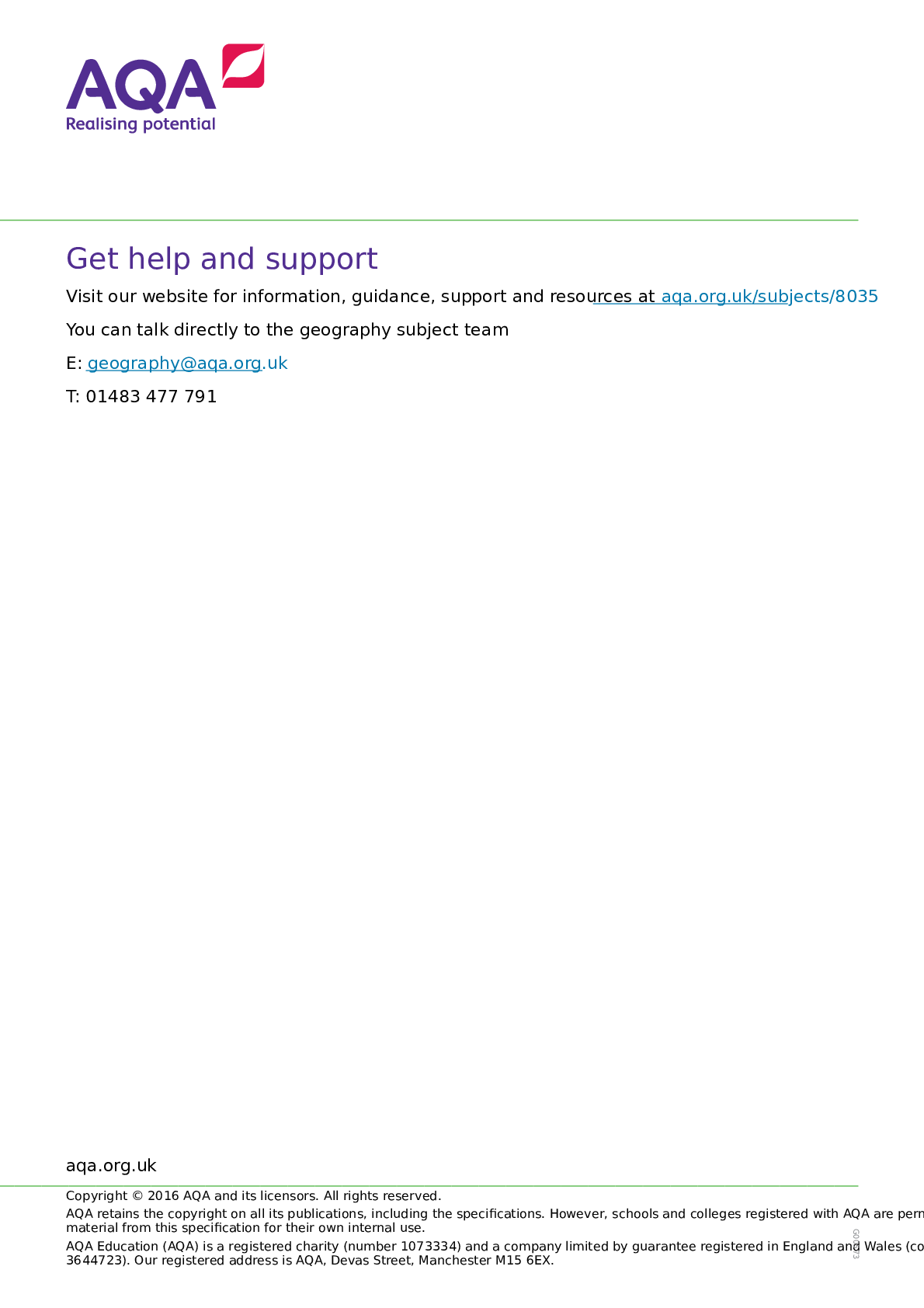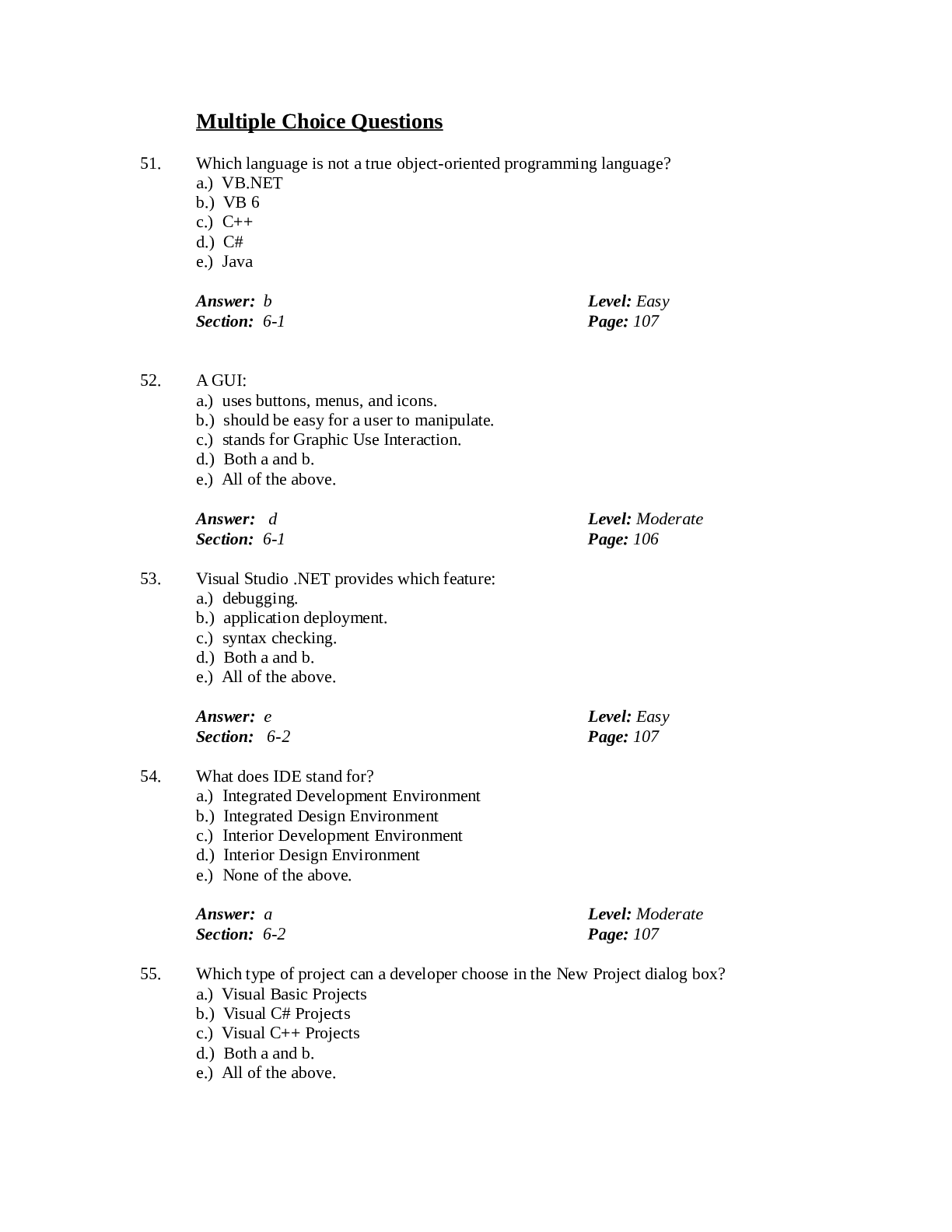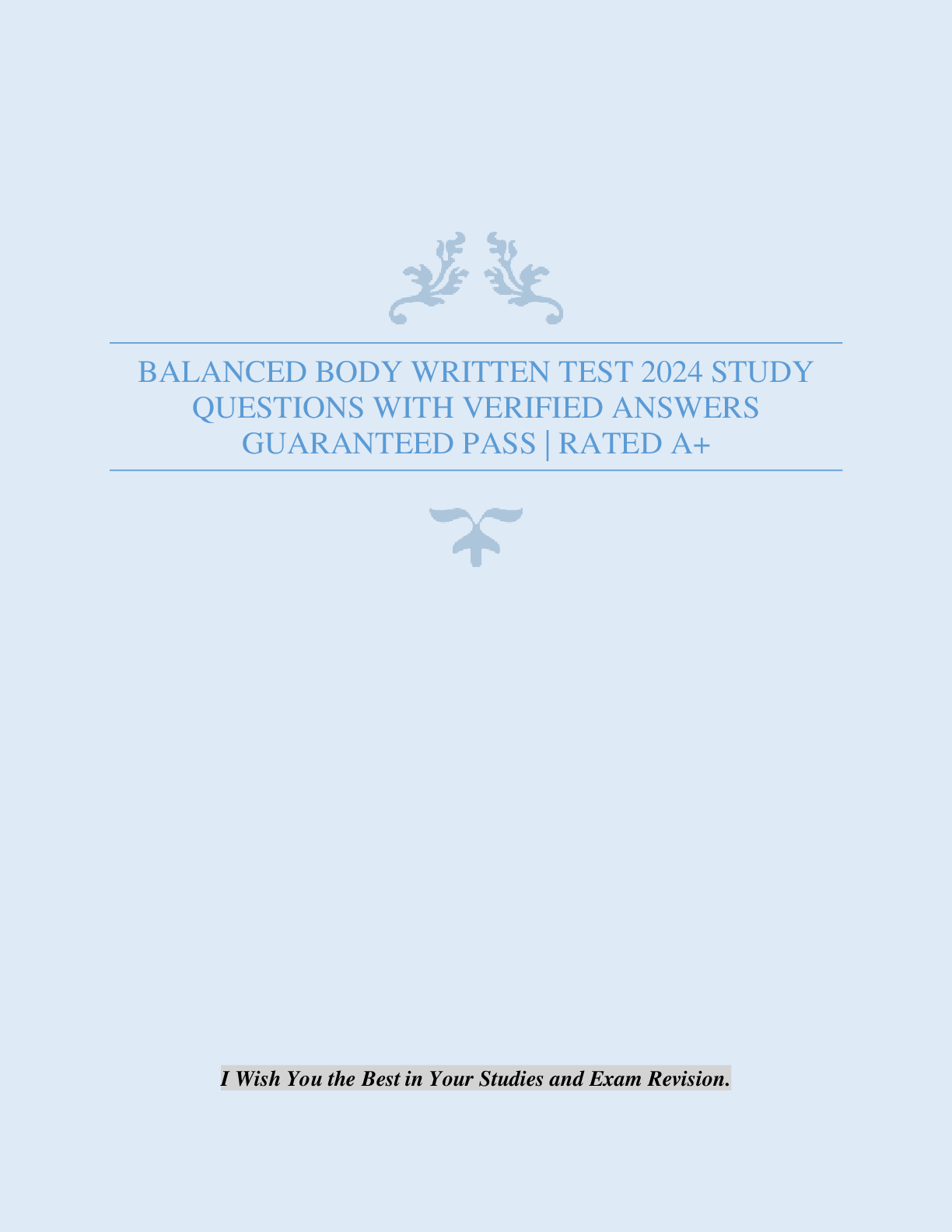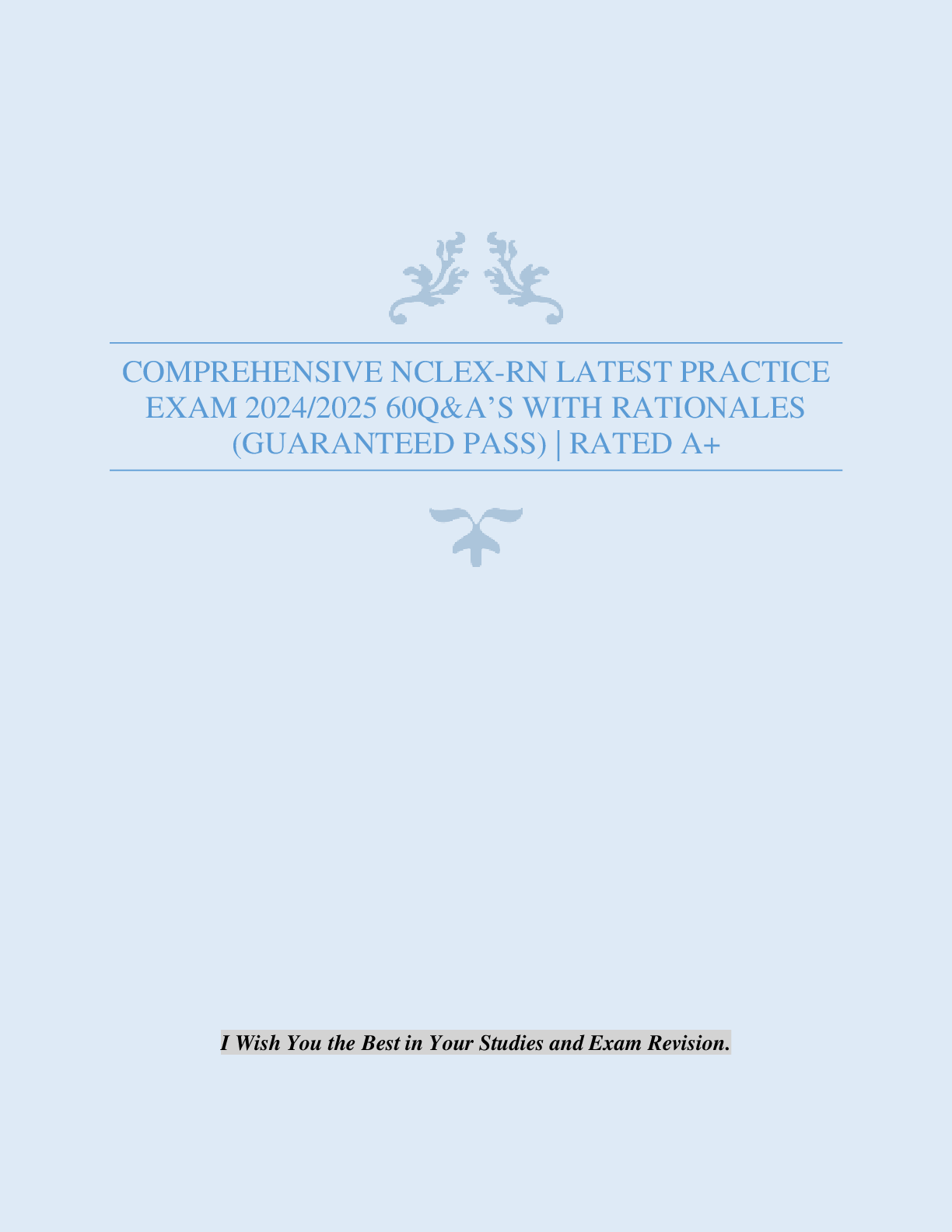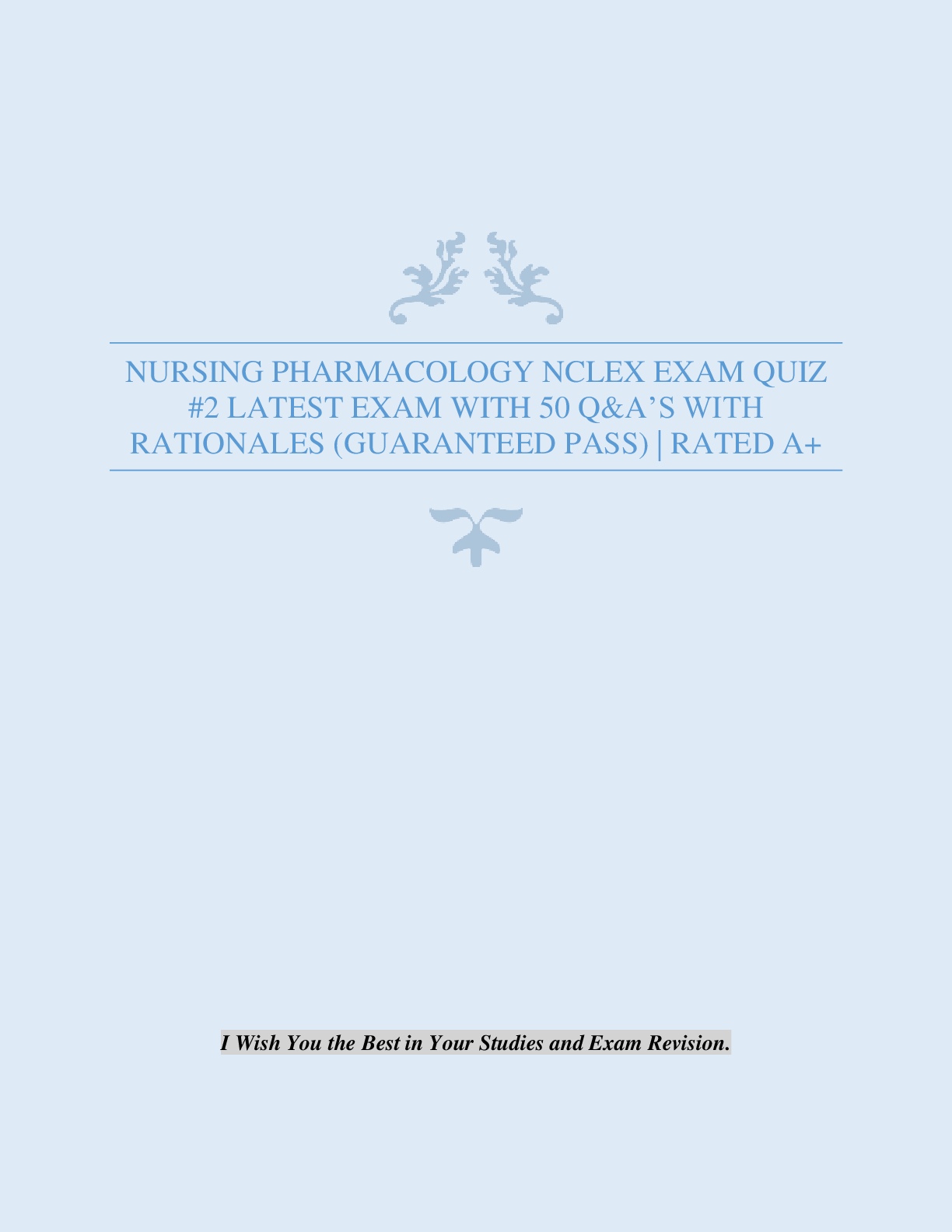Pharmacology > EXAM > NURSING PHARMACOLOGY NCLEX MASTERY EXAM QUIZ 1 50 Q&A’S WITH RATIONALES LATEST 2024/2025 GUARANTEE (All)
NURSING PHARMACOLOGY NCLEX MASTERY EXAM QUIZ 1 50 Q&A’S WITH RATIONALES LATEST 2024/2025 GUARANTEED PASS | RATED A+
Document Content and Description Below
NURSING PHARMACOLOGY NCLEX MASTERY EXAM QUIZ 1 50 Q&A’S WITH RATIONALES LATEST 2024/2025 GUARANTEED PASS | RATED A+ 1. A 2-year-old child is receiving temporary total parenteral nutrition (TPN) t... hrough a central venous line. This is the first day of TPN therapy. Although all of the following nursing actions must be included in the plan of care of this child, which one would be a priority at this time? o A. Use aseptic technique during dressing changes. o B. Maintain central line catheter integrity. o C. Monitor serum glucose levels. o D. Check results of liver function tests. Correct Answer: C. Monitor serum glucose levels Monitor serum glucose levels. Hyperglycemia may occur during the first day or 2 as the child adapts to the high-glucose load of the TPN solution. Thus, a chief nursing responsibility is blood glucose testing. Total parenteral nutrition (TPN), also known as parenteral nutrition (PN) is a form of nutritional support given completely via the bloodstream, intravenously with an IV pump. TPN administers proteins, carbohydrates, fats, vitamins, and minerals. It aims to prevent and restore nutritional deficits, allowing bowel rest while supplying adequate caloric intake and essential nutrients, and removing antigenic mucosal stimuli (Perry et al., 2014). Option A: With proper care, a central catheter can be maintained for several days or even weeks for the delivery of TPN. Apply strict aseptic technique during insertion, care, and maintenance. Frequently assess the CVC site for redness, tenderness, or drainage. Notify the health care provider of any signs and symptoms of infection. Option B: Strict asepsis is to be observed during the placement of the catheter. A chest radiograph should be taken prior to the commencement of feeding to confirm the position of the catheter-tip and to exclude traumatic pneumothorax, the commonest complication related to catheter placement. Option D: Review lab values for increases and decreases out of the normal range. Lab values include CBC, electrolytes, calcium, magnesium, phosphorus, potassium, glucose, albumin, BUN (blood urea nitrogen), creatinine, triglycerides, and transferrin. 2. Nurse Jamie is administering the initial total parenteral nutrition solution to a client. Which of the following assessments requires the nurse’s immediate attention? A. Temperature of 37.5 degrees Celsius. B. Urine output of 300 cc in 4 hours. C. Poor skin turgor. D. Blood glucose of 350 mg/dl. Correct Answer: D. Blood glucose of 350 mg/dl. Total parenteral nutrition formulas contain dextrose in concentrations of 10% or greater to supply 20% to 50% of the total calories. Blood glucose levels should be checked every 4 to 6 hours. A sliding scale dose of insulin may be ordered to maintain the blood glucose level below 200mg/dl. Option A: Catheter-related bloodstream infection or CR-BSI, which starts at the hub connection, is the spread of bacteria through the bloodstream. There’s an increased risk of CR-BSI with TPN, due to the high dextrose concentration of TPN. Symptoms include tachycardia, hypotension, elevated or decreased temperature, increased breathing, decreased urine output, and disorientation. Strict adherence to aseptic technique with insertion, care, and maintenance; avoid hyperglycemia to prevent infection complications; closely monitor vital signs and temperature. IV antibiotic therapy is required. Monitor white blood cell count and patient for the malaise. Replace IV tubing frequently as per agency policy (usually every 24 hours). Option B: Monitor and record every eight hours or as per agency policy. Monitor for signs and symptoms of fluid overload (excessive weight gain) by completing a cardiovascular and respiratory assessment. Assess intakes such as IV (intravenous fluids), PO (oral intake), NG (nasogastric tube feeds). Assess outputs: NG (removed gastric content through the nasogastric tube), fistula drainage, BM (liquid bowel movements), colostomy/ileostomy drainage, closed suction drainage devices (Penrose or Jackson-Pratt drainage), and chest tube drainage. Option C: Related to a sudden increase in glucose after a recent malnourished state. After starvation, glucose intake suppresses gluconeogenesis by leading to the release of insulin and the suppression of glycogen. Excessive glucose may lead to hyperglycemia, with osmotic diuresis, dehydration, metabolic acidosis, and ketoacidosis. Excess glucose also leads to lipogenesis (again caused by insulin stimulation). This may cause fatty liver, increased CO2 production, hypercapnia, and respiratory failure. 3. Nurse Susan administered intravenous gamma globulin to an 18 month-old child with AIDS. The parent asks why this medication is being given. What is the nurse’s best response? A. “It will slow down the replication of the virus.” B. “This medication will improve your child’s overall health status.” C. “This medication is used to prevent bacterial infections.” D. “It will increase the effectiveness of the other medications your child receives.” Correct Answer: C. “This medication is used to prevent bacterial infections.” Intravenous gamma globulin is given to help prevent as well as to fight bacterial infections in young children with AIDS. Gamma globulin injections seem to lower the number of certain infections among children with AIDS but do not cure the lethal ailment. Option A: The main immunological abnormality in human immunodeficiency virus (HIV)-infected patients, and particularly those with the acquired immune deficiency syndrome (AIDS), is a deficiency in cellular immunity. However, symptomatic HIV-infected children also have evidence of deficiency of specific antibody synthesis, and intravenous immune globulin (IVIG) preparations in doses of 0.2-0.4 g/kg every 2-4 weeks have been shown to reduce the incidence of respiratory infections. Option B: IVIG therapy may also reduce the mortality and incidence of bacterial infections in adults but further studies are required. In addition, high-dose IVIG therapy (1-2 g/kg over 2-5 days) produces increased platelet counts in patients with idiopathic thrombocytopenic purpura (ITP) associated with HIV infection. Finally, IVIG therapy may have a role in HIV-infected patients suffering from severe parvovirus B19 or measles infection, or in patients suffering from autoimmune disorders where high-dose IVIG therapy has been shown to be efficacious. Option C: Doctors said that although the gamma globulin treatment did not cure AIDS it seemed to ”enhance the quality” the lives of the children in the study group because it freed them from the constant infections that added to their suffering. Such episodes of sepsis are often a result of bacterial infection. The gamma globulin contains antibodies to many common bacteria, including ones that often kill children whose immune systems have been paralyzed by the AIDS virus. [Show More]
Last updated: 10 months ago
Preview 5 out of 59 pages

Loading document previews ...
Buy this document to get the full access instantly
Instant Download Access after purchase
Buy NowInstant download
We Accept:

Reviews( 0 )
$26.00
Can't find what you want? Try our AI powered Search
Document information
Connected school, study & course
About the document
Uploaded On
Oct 12, 2024
Number of pages
59
Written in
Additional information
This document has been written for:
Uploaded
Oct 12, 2024
Downloads
0
Views
27
